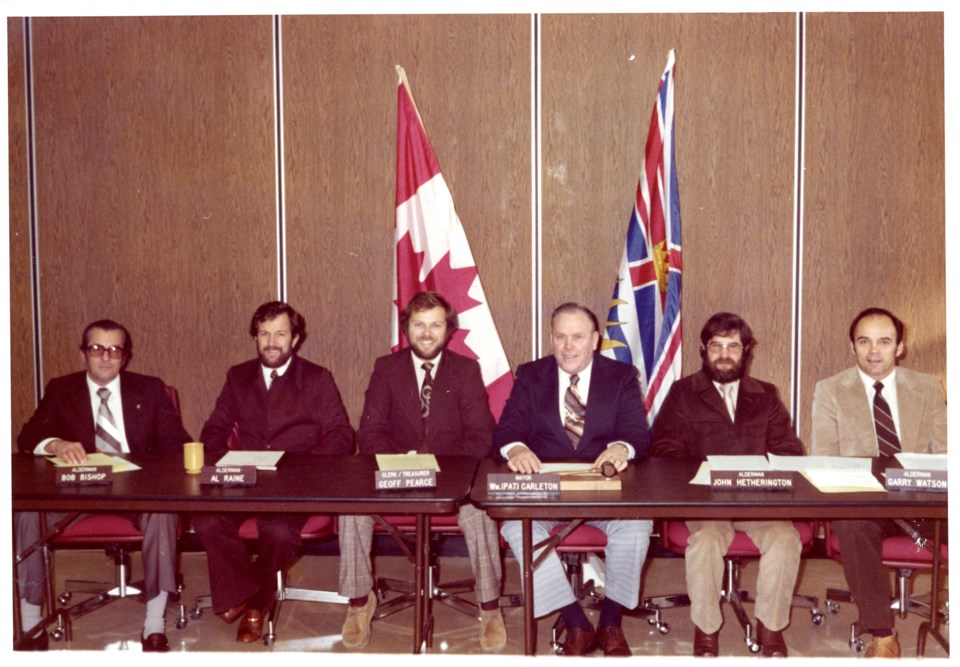As we start 2025, the Whistler Museum is looking ahead at some fairly significant anniversaries for the Whistler area. The 2025-26 winter season is the 60th season of lift operations on Whistler Mountain and the 45th season for Blackcomb Mountain. This February will mark 15 years since Whistler and Vancouver hosted the Olympic and Paralympic Winter Games in 2010. Off the mountains, the Resort Municipality of Whistler (RMOW) turns 50 in September, marking five decades of what some have called the “Whistler experiment.”
The RMOW, Canada’s first resort municipality, was created through the Resort Municipality of Whistler Act, a piece of provincial legislation separate from the British Columbia Municipal Act and one that (with some changes) still governs Whistler today. Previously, the Whistler area had been governed as part of the Squamish-Lillooet Regional District and local interests were supported and championed by organizations such as the Whistler Mountain District Chamber of Commerce (formed in 1966, today the Whistler Chamber of Commerce) and the Alta Lake District Ratepayers Association (ALDRA).
Late in the summer of 1975, property owners and residents of the Whistler area (there were about 500 residents of all ages at the time) had a chance to elect their first municipal council, and on Sept. 6, 1975, five representatives were sworn into office at the gondola base of Whistler Mountain: Pat Carleton, Bob Bishop, John Hetherington, Garry Watson, and Al Raine.
Whistler’s first council was a varied lot, made up of a retired coffee salesman, a real estate developer, a ski patroller, a lawyer, and the Ski Area Coordinator for B.C., all of whom came to the Whistler area at different times and for different reasons.
Pat Carleton, Whistler’s first mayor, came to Alta Lake in 1956 for the fishing and retired to his home on Alpha Lake in 1971. Bob Bishop and his family moved to the Whistler area from Squamish in 1968. Bob, along with his partner Bernie Brown, developed the Whistler Cay neighbourhood, as well as the beginnings of the Whistler Golf Course. John “Bushrat” Hetherington, like many over the years, came to Whistler Mountain to ski and worked for the pro ski patrol while living in the original Toad Hall and later Tokum Corners. Garry Watson was first introduced to the area through the Garibaldi Olympic Development Association and the idea of hosting the Olympic Winter Games here.
Unlike the other members of council, Al Raine was not elected to his position in 1975, but was appointed by the provincial government. A ski coach and consultant who advised on ski-area development projects, Raine worked for the BC Ministry of Lands as the provincial ski area coordinator where he was responsible for creating and implementing ski-area policies and overseeing the development of ski areas. Through this position, he worked with the Ministry of Municipal Affairs to make Whistler a resort municipality and, for his efforts, was appointed to council from 1975 to 1982 (after Raine stepped down to focus on his role as executive director of the Whistler Resort Association, his seat on council became an elected position).
Described by Watson as “the energy” and “the innovator,” Raine was deeply involved in the creation of Whistler Village, the development of a ski area on Blackcomb Mountain, and much more. After leaving Whistler, he and his wife Nancy Greene continued to advocate for the importance of skiing, ski-area development, and tourism in B.C. Raine served as mayor of Sun Peaks from 2010 (when it became a municipality) to 2024, stepping down just before he sadly passed away last month.
Over the next year, we’re sure to hear and share many stories from the early days of the RMOW and we look forward to learning more about the people, organizations, and events that have shaped Whistler over the past five decades.




